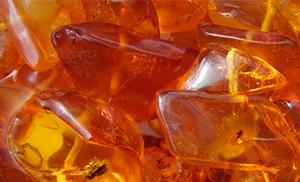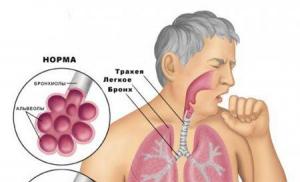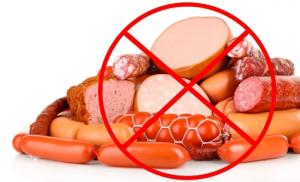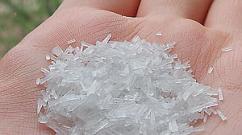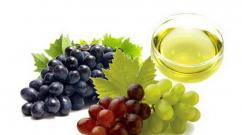What is MSG and should you avoid it? What is monosodium glutamate - is it harmful or not, its effect on the human body. Cottage cheese contains monosodium glutamate.
Monosodium glutamate. Believe me, you eat it every day. So what is it - a beneficial food additive or a health hazard?
Monosodium glutamate is a food additive designed to enhance the sense of taste by increasing the sensitivity of the tongue receptors.
Monosodium glutamate or E 621 is the most common flavor enhancer around the world.
It is a white crystalline powder, highly soluble in water. It is known among the Chinese as “flavoring seasoning” and among the Japanese as “wonderful powder” (“fe-jing”).

Monosodium glutamate is added to almost all industrial products. These are sausages, seasonings, bouillon cubes, dry noodles (soups), hamburgers, bacon, chips, crackers, canned food, dumplings. And this is almost the main component of the same industrial sauces - mayonnaise, ketchup and others.
As you know, a person distinguishes four shades of taste: sweet, salty, sour and bitter. And thanks to monosodium glutamate, we learned what the fifth taste is. The Japanese call it “umami” - that is, the fifth taste.

Monosodium glutamate was invented a long time ago. At the beginning of the twentieth century, the Japanese scientist Kikunae Ikeda, while studying soy sauce and other products typical of Southeast Asia, tried to answer the question of why food flavored with certain dried seaweeds becomes more tasty and appetizing. It turns out that this effect is due to the glutamic acid they contain. In 1909, the scientist was granted a patent for a method for producing food preparations. Using this method, a salt of glutamic acid was obtained - monosodium glutamate, which began to be sold in Japan under the name “ajinomoto”, which means “soul of taste”. And in the 50s of the last century, they found out that monosodium glutamate (on foreign products they write MSG) miraculously helps produce smells and tastes similar to meat.
Since then, the flavor enhancer - monosodium glutamate - has become widely used and gained popularity all over the world. Its annual consumption on the planet has reached 200 thousand tons.
BUT IS THIS SUPPLEMENT SO GOOD?
On this issue, society is divided into two camps: some (by a strange coincidence, these are, as a rule, manufacturers of various products) believe that this is a wonderful food additive, without which the diet of a modern person would become monotonous and “faceless” in taste, others - that it is "White death".
For adults, the daily dose of monosodium glutamate should not exceed 1.5 grams, for adolescents - 0.5 grams per kilogram of body weight. It is generally better not to give children under three years of age foods containing monosodium glutamate.
Experts say: monosodium glutamate in small quantities does not cause harm, but manufacturers do not indicate its exact proportion in products on the labels.

PROVEN FACTS
Monosodium glutamate is addictive. That is why there is a lot of it in fast food.
Monosodium glutamate sometimes masks spoiled or low-quality raw materials. It successfully fights off the smell of rotten meat.
Proven health hazard – “Chinese restaurant” syndrome. This is caused by “overeating” the substance. Causes nausea, vomiting, weakness, dizziness, chest pain.
For most people, mild Chinese restaurant syndrome goes away without serious harm to the body. One way to reduce the likelihood of the syndrome occurring is to take vitamin B6 before consuming foods with large amounts of MSG.
Another alarming fact is that many food producers carefully “hide” the presence of monosodium glutamate in their products. Remember: E621, “flavor enhancers”, “spices” without their description, “taste identical to natural”, MSG (in foreign products) - this is where this partisan is hiding.
Other names for monosodium glutamate:
Umami (umami)
- E621
- weijing
- monosodium glutamate
- monosodium glutamate
- monosodium glutamate
- monosodium glutamate
- taste enhancer
- sodium salt of L-glutamic acid
- monosodium salt of glutamic acid
- monosodium glutamate
- MSG (abbreviation for monosodium glutamat)
The supplement has been proven to be harmful to asthmatics. It worsens the course of the disease.
The presence of only one amino acid in the human diet in large quantities leads to various biochemical disorders. Various reactions of the body to an excess of glutamic acid have been recorded. These include headaches, stomach upset, nausea and vomiting, diarrhea, irritable bowel syndrome, asthma, breathing problems, anxiety disorders and panic attacks, rapid heartbeat, partial paralysis, coordination problems, confusion, mood swings, behavioral problems (especially in children and adolescents), allergic symptoms, skin rashes, depression... Also, medical studies have shown a connection between monosodium glutamate and Alzheimer's syndrome, diabetes, Parkinson's disease, etc.
OR USEFUL?..
Many doctors believe that monosodium glutamate is not just harmful, but dangerous to health, because its mechanism of action is reminiscent of a narcotic. Easily penetrating the blood and brain, it directly affects hormonal levels and changes the genes responsible for taste, increasing the sensitivity of the taste buds of the tongue. This means that glutamate “weans” a person from natural food, hooking him on unhealthy fast food.
However, according to Lyudmila Vasilevskaya, Doctor of Medical Sciences, Professor, with monosodium glutamate everything is not so simple. “At the Institute of Nutrition, specialists have been studying the mechanism of action of monosodium glutamate on the human body for years. Many dissertations have been written on this topic. Based on our research, it, on the contrary, is not only not harmful, but, on the contrary, beneficial. Monosodium glutamate enhances the production of endogenous gastrin, and gastrin, in turn, enhances the proliferation of cells in the gastric mucosa, stimulating the secretion of gastric juice and enhancing intestinal motility.”
Monosodium glutamate is used in the treatment of hypoacid gastritis - gastritis with low acidity, allowing it to be normalized.
In addition, according to Lyudmila Vasilevskaya, glutamate in the intestines is included in the process of producing glutathione. This substance protects the immune system of our body. By the way, most glutathione is found in the liver.
This flavor enhancer also helps hypertensive patients. If table salt is contraindicated in case of hypertension, then monosodium glutamate can be safely added to food.
In support of monosodium glutamate, it is also said that it is not prohibited anywhere in the world. “Affects the retina of the eye? But lactose (more precisely, its component, galactose) from regular milk, by the way, can also cause cataracts. Is it addictive? Well, so what - people also become addicted to excessive consumption of tea, coffee, and chocolate,” Lyudmila Vasilevskaya argues. “There is simply a dose of monosodium glutamate that cannot be exceeded - 9 grams of glutamate per day maximum.”
The problem is that in most fast food products this dose is exceeded several times, and the consumer has no way to control the situation, as is the case with a salt shaker or sugar bowl. The producers have already generously seasoned the finished dish for it.
Sodium glutamate (glutamate) is the most common flavor enhancer with a very scandalous reputation. Many sources assure of its safety, arguing for its content in natural foods; they write that sodium glutamate does not cause harm to health and can even be useful - it is used to treat certain diseases. The latter refute everything in protest, claiming that the effect of natural sodium glutamate on the body is different from the synthetic one that is added to food. Frequent consumption of sodium glutamate jeopardizes children's health. And children eat without wondering why they like it so much, because any tastes and aromas can be artificially synthesized from sodium glutamate.
Sodium glutamate is a powder that has a slight sweetish-salty taste, used to enhance the own taste of dishes or to add something completely new. For example, this adds flavor to meat, mushrooms, fish, chips, cookies, and crackers. It is used to disguise low-quality raw materials, low grades of products, to add flavor to tasteless products, gives a fresh look to frozen vegetables, and prevents unpleasant odors of rotting and rancidity of products. Widely used in meat processing and fast food production.
How is sodium glutamate indicated in foods?
Manufacturers, when describing the composition of the product, call monosodium glutamate differently.
- Flavor enhancer.
- Flavor improver.
- Flavoring additive.
- Monosodium glutamate.
- Sodium guanylate.
If you take any package of ready-to-eat food purchased in a store, then in 80% of cases the composition will indicate: “contains a flavor enhancer or sodium glutamate.” Its highest concentration is in spices for dishes, slightly less in ready-made fast food products.
The use of sodium glutamate is very beneficial for most manufacturers, especially for those whose products are not of good quality and usefulness. After all, food products with a more pronounced taste are purchased more quickly. You can experiment: buy smoked wings at the store that contain flavor enhancers, and prepare a second portion yourself. Having treated any company to them, you will see that store-bought ones sell out much faster.
Since its extremely dangerous harm to the body has not been proven, there can be no talk of a ban. Otherwise, most food brands will fail.
Mechanism of action
Monosodium glutamate is a toxin that causes the brain to think that food tastes good. Once in the mouth, it affects the receptors of the tongue, which, interestingly, are distributed over its entire surface. Sodium glutamate adjusts and enhances their sensitivity, thereby causing a signal in the brain “I want to eat, it’s very tasty.” In another way, sodium glutamate is called the “fifth sense of taste” - umami.
Is it true that sodium glutamate is part of natural products?
Natural sodium glutamate is partially produced in the human body; some natural products contain it in minute quantities:
- Meat.
- Bread and...
- and sauce.
- Some algae.
- Milk.
- Mushrooms.
- Cheese and cottage cheese.
- Legumes.
Therefore, food with the addition of bread or rolls becomes more satisfying and tastier, and tomatoes will be a good addition to any vegetable dish. Yes, indeed, such sodium glutamate is beneficial and does not pose a danger to the child’s health. But in food products with a long shelf life, a synthetic analogue is added, which has slightly different functions. It is obtained from natural products through a chemical reaction - from cane and beet sugar, starch, yeast fermentation products, etc. Synthetic sodium glutamate is cheap, accessible, and not only enhances, but also gives a completely new taste to food.
Usage rate
 The law does not oblige the manufacturer to indicate the amount of monosodium glutamate per 100 g of product, but he must indicate the presence of this substance in the composition.
The law does not oblige the manufacturer to indicate the amount of monosodium glutamate per 100 g of product, but he must indicate the presence of this substance in the composition. Symptoms of an allergy to sodium glutamate:
- Tachycardia.
- Suffocation.
- Heat.
Symptoms occur within the first 20 minutes after consuming sodium glutamate and last for about 3 hours.
Which products contain more often:
Unfortunately, this list includes any “goodies” for modern children.
- Meat, fish and seafood.
- Smoked meats.
- Fast food food. In packaged foods (chips, snacks, crackers) it is one of the main components of the composition. Some fast food foods may be one-quarter sodium glutamate.
- Mushrooms.
- Frozen vegetables, .
- Canned food.
- Sweets.
At one time it was added to baby food, but thanks to numerous scandals, this action has now been discontinued and no violators have been found. You should not often give children products containing yeast extract, which acts similarly to sodium glutamate.
Harm to the child
- . Sodium glutamate itself is not inclined to lead to excess weight, but due to the strong taste of food, more is eaten than usual.
- Can cause irreversible damage to the retina of the eye, leading to loss of vision. But this is only in experiments on animals using unrealistically large doses. However, there is no scientific evidence that long-term use cannot lead to a similar effect in humans.
- It is addictive, both mental and physical, especially in young children.
- Excessively stimulates the centers of the brain - contributes to the development of attention deficit hyperactivity disorder, etc.
- Atrophy of taste buds - after regular consumption, ordinary food is perceived as tasteless.
- Often predisposes to the development of bronchial asthma.
- It can also cause enteritis.
- The food is stale, of dubious quality, the taste of which, “under the guise of sodium glutamate,” can easily cause anxiety in a child.
An adult’s body may have a mild, smoothed reaction to flavor enhancers, while a child’s body can exhibit a more acute response.
Sodium glutamate belongs to, and whether your child eats them or not, you must choose for yourself. We can only warn that products containing it cannot be called healthy. And since the manufacturer does not indicate the amount of flavor enhancer contained, then it’s worth thinking about whether he really has something to hide.
Monosodium glutamate is a supplement that every person, young and old, has heard of at least once. But not everyone knows what properties this element has, where it is used, how dangerous it is and whether it is dangerous at all. Let's talk about this in more detail - in our review you will find interesting and useful information that will definitely come in handy before going to the store!
Description, properties, characteristics
Let's discuss what MSG is in food.
Monosodium glutamate is a monosodium salt of glutamic acid, part of a group of substances that enhance and modify the taste of food products. The chemical formula of monosodium glutamate is C5H8NaNO4∙H2O, its international name is Monosodium Glutamate.
The composition of the food additive monosodium glutamate is formed in the laboratory:
- The glutamic acid solution is neutralized with a 50% caustic soda solution;
- After obtaining a pH value of 6.8, the substance is concentrated and cooled;
- The crystals obtained in the precipitate are dried.
Let us note the main characteristics of the product:
- White color;
- Appearance: crystalline powder;
- There is no smell;
- Soluble in water;
- The taste is salty;
- High resistance to temperature and light.
The operating principle of the component is as follows:
- The constituent substances stimulate certain receptors of the tongue;
- Due to this, the taste characteristics of food become more pronounced and vibrant.
You understand what monosodium glutamate is in products - and you will also be interested to know that in Russia the component causes an ambiguous reaction. Most people are wary of using the substance.
But in America, China and Japan they love this element very much - it takes its place on the shelf in every kitchen. In Japan, it is even called “umami” - it is the fifth taste, in addition to spicy, salty, sour and sweet.
Is monosodium glutamate harmful or not?
The effect of monosodium glutamate on the body is being studied by expert scientists around the world - new laboratory studies are being carried out, and experiments are being carried out. The debate has been going on for decades, but it has not yet been possible to come to a single conclusion - some experts claim the supplement is safe, others assure the public that monosodium glutamate is harmful to health.
The main factor that unites representatives of the two opposing camps is that a small amount of the supplement cannot seriously harm! This supplement is a derivative of glutamic acid, which is part of the plasma and cellular structure of proteins.
- The supplement is recognized by the body as an amino acid;
- The element is absorbed by the intestines and is not absorbed into the walls;
- The remainder of the consumed component is eliminated naturally.
There is an opinion that the harm of monosodium glutamate to the human body is detected only with regular excessive consumption. The following negative reactions can be identified:
- The appearance of a headache;
- The appearance of shortness of breath;
- Increased sweating;
- Redness of the skin;
- The appearance of pain in the chest;
- Decreased vision.

Some experts believe that there are benefits of monosodium glutamate - it can be used:
- With protein deficiency;
- In the treatment of diseases of the nervous system;
- For medicinal purposes in dentistry.
Safe supplement rate
You already know why the taste enhancer monosodium glutamate is dangerous - it’s time to discuss another issue. Let's note the safe level of the substance?

The permissible norm indicators were derived after much research - the results are recorded in the regulations of the Customs Union and the European Union. Let's discuss specific numbers?
- The norm for an adult is 10 grams per 1 kg of body weight;
- The norm for children over three years old is 3-4 grams per 1 kg of body weight;
- Children under 3 years of age - consumption is prohibited;
- Lethal rate - 16 grams per kilogram human body weight.
Most often, the amount of substance in food products does not exceed 3-5 grams! This amount cannot harm the average person.
What is it made from?
Before discussing where to look for the component, let’s note what monosodium glutamate is made from:
- Until the 1960s, it was extracted from wheat gluten;
- Artificial E621 is synthesized in the laboratory;
- Another answer to the question of what monosodium glutamate is made from is natural ingredients. The additive is the result of bacterial fermentation of beets, molasses or sugar cane.

Where is monosodium glutamate found?
Now let’s discuss which products contain monosodium glutamate - representatives of the food industry have long appreciated the properties of the component:
- In sausages, sausages and prepared minced meat;
- In chips and crackers, ready-made snacks;
- In canned products;
- In semi-finished products;
- In fast food dishes;
- In bouillon cubes and instant foods.

Now that you have found out where monosodium glutamate is added, it’s time to talk about the misconceptions that accompany such products.
Myths about the supplement
This component has become the subject of a lot of rumors and speculation - especially due to the question of whether monosodium glutamate is harmful to human health. Let's figure out together which of the popular beliefs is a lie!
The first myth is about asthmatics
Many believe that the component can provoke exacerbation and development of bronchial asthma and exhibits strong allergic reactions.
- Scientists have proven that this is an unfounded statement;
- There is no direct connection between the consumption of elements and allergies or the development of asthma.

Myth two – the development of obesity
A huge number of people believe that it is the consumption of E621 that leads to a sharp increase in weight and provokes the appearance of obesity.
Indeed, such products cause a strong appetite, even if you no longer feel like eating. But the connection between weight gain and supplement use has not been proven!
- Obesity causes excessive consumption of harmful products - fast food, sweet and fatty foods;
- It is a high-calorie diet that provokes weight gain, not a supplement at all.
Research conducted by several large expert companies has proven the inconsistency of this hypothesis.
Myth three - addiction
A common misconception is that dishes containing E621 are addictive, similar to drugs!
- This lie is nothing more than a legend;
- The myth was created by those who justify addiction to unhealthy food;
- The proof is that meat or bread contain a huge amount of natural additives - but they are not addictive.

Myth four – loss of vision
Some time ago, Japanese scientists (led by Hiroshi Oguro) conducted a laboratory experiment on rats:
- The animals received food containing excess E621 for six months;
- Some animals received the element by injection.
The results shocked the public - the rats suffered serious visual impairment, thinning of the retina and lens. But it should be taken into account that the amount of the additive was a fifth of the diet - this is a disastrous figure leading to destruction.
Myth number five: Chinese restaurant syndrome
Kwok's disease is the manifestation of the following symptoms (20 minutes after eating):
- Heartburn;
- Numbness of the neck and arms;
- Chest pain;
- Drowsiness and nausea;
- Increased heart rate and spasms in the lungs.
The symptoms go away on their own after one and a half to two hours.
The European Agency for the Safety of Food Additives conducted studies that proved that Kwok's disease is a rare form of food allergy to oriental cuisine, and nothing more.
The harm and benefits of the taste enhancer monosodium glutamate for the human body is important information that needs to be studied in detail. We told you everything you need to know - now you are armed with the knowledge that will help you maintain your health and well-being!
Monosodium glutamate is a white crystalline powder that is highly soluble in water. It was obtained at the beginning of the last century in Japan, although its popularity extends throughout the civilized world. Scientists have found that this food additive increases the smell and taste of any dishes and products.
The benefits of monosodium glutamate - what does medicine say?
For years, scientists have been studying the mechanism of action of monosodium glutamate on the human body.
Countless studies prove not only the harm, but also the benefits of this dietary supplement.
- Monosodium glutamate helps improve the production of endogenous gastrin, which, in turn, increases the proliferation of cells in the gastric mucosa. Thus, intestinal motility improves and the secretion of gastric juice is stimulated.
- In medicine, the food supplement E621 is used in the treatment of gastritis with low acidity (hypoacid gastritis) to normalize it. Glutamate E621, when it enters the intestines, is connected to the process of producing glutathione, which strengthens the human immune system.
- Monosodium glutamate E621 is especially recommended for the diet of people who suffer from hypertension. For them, salt is contraindicated, and adding the food additive E621 to food makes the taste of the food more complete.
- Medicines produced on the basis of Glutaminate are used by medicine to treat diseases of the central nervous system.
- Glutamic acid is capable of combining ammonia in the human body and converting it into soluble, completely safe salts.
Effects of monosodium glutamate on the body and harm - why is monosodium glutamate dangerous for health?
Food additive E621, well known as monosodium glutamate, is found in many edible products, especially those with an attractive price and low quality.
- Synthetic food additive E621 has toxic properties. It has an excessive stimulating effect on brain cells. When consumed regularly, monosodium glutamate, especially in adolescents and children, can cause irreversible changes.
- Glutamate is extremely dangerous for pregnant women. When the expectant mother consumes products with E621, harmful substances contained in the food can sneak into the brain and nervous system of the fetus (via the placenta) and affect them.
- As numerous studies demonstrate, monosodium glutamate can cause some kind of food addiction in humans . The body stops accepting natural food, and a person simply cannot do without adding monosodium glutamate to food. Many people who continuously consume monosodium glutamate lose their sense of taste. Their taste buds stop functioning.
- Excessive consumption of the E621 dietary supplement in people increases the likelihood of developing health problems. They suffer from diseases such as renal failure, asthma, allergic reactions and other terrible diseases.
- In people who regularly consume MSG, the structure of the retina is disrupted, digestive problems and hormonal imbalances arise. The likelihood of developing stomach ulcers and gastritis increases.
The permissible content of E621 in products is one and a half grams per two liters or one kilogram. The maximum glutamate content in products should not exceed 0.8 percent.
For adults, the permissible norm is considered no more than one and a half grams of food additive E621, and for teenagers - no more than half a gram for every kilogram of human body weight.
This supplement is generally contraindicated for young children.
Additive E621 is one of the permitted additives, and as long as people continue to buy products with this additive, manufacturers will not stop adding it. Everyone has the right to decide for themselves what food to eat. In this situation, we can only emphasize that products containing monosodium glutamate cannot bring any benefit.
Lists of products containing natural and chemical monosodium glutamate - choose natural!
The chemical glutamate (MSG or Monosodium Glutamate) is the sodium salt of glutamic acid, which is added to food as a flavor enhancer.
The widest use of monosodium glutamate is widespread in the manufacture of concentrates such as gravy, soups, canned food, jarred sauces, “branded” seasonings, bouillon cubes, etc.
Monosodium glutamate E621 is found in all industrially produced products. It is especially abundant in dairy and meat products and semi-finished products.
Here list of brands that produce products containing unnatural monosodium glutamate: Chumak, Veres, Dannon, Bystrov, dried fruits, Mivina, Oleina, Jaffa, Nescafe, McCoffee, President, Nestle, Fanny, Doshirak, Dobry, Lactonia.
If we talk about products containing the chemical monosodium glutamate, we note the most famous:
- All sorts of fast foods;
- Most semi-finished products;
- Bouillon cubes;
- Chips;
- Dry seasonings;
- Crackers;
- Ready-made sauces.
This is what unnatural monosodium glutamate is all about. Now let's talk about natural glutamate.
Three main sources of natural glutamate have been identified:
- Seaweed;
- Malt;
- Molasses (beets).
Natural MSG can be found in foods such as parmesan cheese, pork, beef, chicken, mushrooms, spinach and asparagus, cabbage and onions, king crab, peas and corn, shellfish, cheddar, mackerel, ripe tomatoes, sardines, emmental cheese, ham, bacon, soy sauce, kombu seaweed .
Using these products, you can prepare a natural, tasty dish with a real and vibrant taste, without resorting to any chemicals.
May 26, 2013
The sense of taste as a consequence of evolution arose for a reason. The unpleasant bitter taste of poisons or the sour taste of spoiled food protected people from poisoning. With the help of sweet taste receptors, our ancient ancestors determined in this way the sweetest, and this means, energy-rich fruits. Everyone knows that salt in small doses is necessary for our life. Even before the beginning of the 20th century, it was believed that people’s taste sensations are limited to 4 tastes: sour, bitter, salty, and sweet.
In 1907 In Japan, one chemist Kikune Keda suddenly became interested in the taste of an ingredient in most traditional Japanese dishes - kombu seaweed. From 40 kg of this algae, he isolated 30 g of glutamic acid, which, as it later turned out, was responsible for its characteristic taste. Ikeda eventually came to the conclusion that taste is an independent, 5th taste, which was called “umami” (from Japanese - “appetizing taste”).
Over the course of 100 years, this term has entered the lexicon of the food industry around the world, but only in the 21st century was it finally established that there are various taste buds on the tongue that are specific to glutamic acid; in addition, Ikeda’s conclusions were confirmed at a high scientific level.
Realizing the significance of the discovery, in 1908 Ikeda was given a patent for a method for producing this amino acid from gluten. And after another 1 year, his company Ajinomoto (translated as “Essence of Taste”) launched a new seasoning on the market - the sodium salt of glutamic acid, or monosodium glutamate, or flavor enhancer E621. Now this substance is one of the most widely produced products in the food industry.
Glutamic acid E621 - taste of protein
In truth, we have long been forming our own taste preferences based on the glutamic acid content of various foods. In addition, our ancestors, who roamed the expanses of the African continent, noticed that slightly “stayed” meat tasted a little better than fresh meat. Now we understand why - as a result of the “ripening” of meat, a certain part of the proteins undergoes a certain fermentation, which ultimately leads to an increase in the content of free glutamic acid. A certain selection of most cultivated plants was carried out in the direction of selecting only the most delicious, and this means, varieties rich in this substance.

Such glutamic acid-rich foods have been used since ancient times to improve the taste of food, for example, seaweed or tomatoes. Cooks invented cooking methods that led to an increase in the content of free glutamate in the prepared dish, and were even able to learn how to “correct” the composition of products, while subjecting them to certain processing and converting, for example, relatively neutral-tasting, for example, milk or soy protein in cheese, as well as soy sauce.
So why is this taste so pleasant to us? It's quite simple: umami is the taste of protein. Considering the possible diversity of all natural proteins, it is impossible to create a universal receptor for detecting them in food (unlike, for example, receptors for sweet or salty taste). Nature found the best solution - she gave us taste buds that are specific not to the proteins themselves, but to their structural elements - amino acids. If there is protein in the food, then there is also a certain number of free amino acids. The most common amino acid in nature is glutamine (in the composition of any protein these are amino acids from 10 to 40%), it has become a kind of “marker” that indicates to us the high content of the desired protein in food (by the way, some other amino acids also have an “umami” taste ").
Is glutamate a flavor enhancer or improver?
Our consumers' misunderstanding of the specific effect of monosodium glutamate is associated with inaccurate definition. In legislation, as well as in everyday life, it is also called a “taste enhancer.” In fact, glutamate is not an “amplifier”, but rather a carrier of one of the basic tastes, for example, like salt, sugar or citric acid. The only taste that glutamate can enhance is umami. In English, by the way, its functions are described more precisely - it is a taste enhancer, i.e. "taste improver" but not "enhancer".

Monosodium glutamate will not be appropriate in just any dish. For example, no one adds it to candies, chocolate, yoghurts or soft drinks - there is no point in introducing a new taste where it is not needed. Glutamate (E621) determines the perceived taste of many familiar dishes, for example, homemade cutlets, a hamburger in some roadside cafe, or Peking duck in an exclusive restaurant. It is not added here on purpose - it is created from protein during the cooking process of food.
Natural and synthetic monosodium glutamate
The most famous myth about it is associated with the origin of glutamate. “Natural glutamic acid, as well as its salts, are not the same as synthetic glutamate,” say supporters of this myth. It happens, they add an argument about the existence of certain isomers of molecules, which are distinguished by the spatial configuration of atoms or groups of atoms (for example, they are chiral, i.e. mirror images of each other). In fact, the glutamine amino acid, like all other amino acids, can be found in two isomers.

